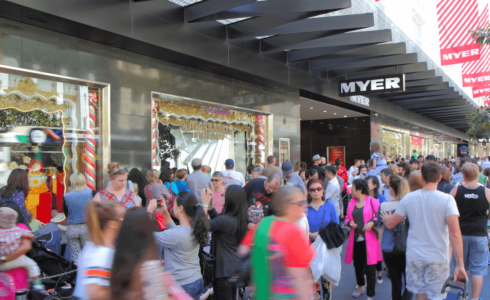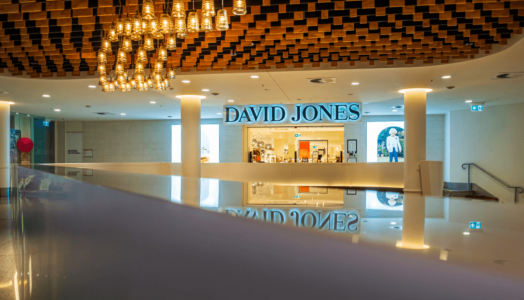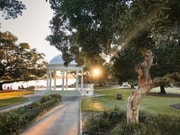The truth behind the 'downfall' of Australia's most beloved retailers – are they losing their 'magic'?
- Replies 23
Once upon a time, department stores were the crowning jewels of the Australian retail scene. These shopping emporiums dominated the retail landscape, offering various high-end products and services under one roof.
For many of us, they were places of joy and wonder, filled with cherished memories of childhood shopping trips, the excitement of bustling aisles, and the glamour of impeccably presented staff.
But times have changed, and these once-cherished giants face an uncertain future. So, what's killing Australia's most iconic retailers? Let's look at the facts and reminisce about the days gone by.
In a comprehensive research project funded by the Australian Research Council, Professor Robert Crawford, an advertising expert from RMIT University's School of Media and Communication, along with his colleagues from Macquarie University, has conducted interviews with former and current department store employees and shoppers.
The objective of their research was twofold: to meticulously record the historical evolution of these establishments and to obtain a deeper comprehension of the obstacles they encounter in the present times.

During the interviews, many people shared their nostalgic memories of visiting department stores when they were young. They described the thrill of dressing up and travelling from the suburbs or countryside to the city, immersing themselves in the vibrant city life.
These retail giants were known for their towering buildings and stunning window displays, especially during the festive Christmas season.
Once inside, the excitement continued as shoppers and staff navigated multiple floors adorned with gleaming counters and immaculate displays. The presence of old-fashioned elevators operated by courteous attendants and a cosy cafeteria where a much-anticipated lunch awaited further enhanced the charming atmosphere.
There was a palpable sense of glamour, with staff renowned for their impeccable appearance, extensive product knowledge, and impressive sales skills.
Moreover, these department stores played a significant role in shaping the early careers of many young Australians, providing them with valuable skills that proved beneficial in various other industries. For some, it served as the stepping stone to long and rewarding careers in the retail sector.
So, why are today's department stores struggling to capture the magic they once had?
Many interviewees expressed disappointment with the lack of excitement and glamour in modern stores. They noticed fewer customers, quieter branches in suburban areas, and a less impressive range of products. One common complaint was the need for more helpful and knowledgeable staff.
This is a significant loss, particularly for a generation that grew up expecting attentive service and expert product guidance in the department stores of the past.
Moreover, department stores no longer have a monopoly on product variety. Suburban shopping centres and online retailers now offer an even greater selection. Younger generations, who have yet to experience the glory days of department stores, might not see much difference between these traditional establishments and discount retailers like Kmart or Target.

The decline of these iconic retail giants can be attributed, at least in part, to a generational gap. Younger shoppers, without a nostalgic attachment to the extravagance and exceptional service of the past, are proving to be more difficult for department stores to attract.
However, it's not all doom and gloom for these establishments. Although David Jones is facing difficulties, recent data indicate some improvement in business for Myer. The department store model is not on the verge of extinction yet, but it undeniably confronts a series of substantial challenges that must be addressed and overcome.

By understanding the past and embracing the future, we can only hope these beloved Australian retailers can regain the enchantment that was once dear to us. They hold within them cherished memories and experiences that are an integral part of Australian history.
So, the next time you step into your local department store, take a moment to appreciate the history that has shaped it and the optimism that it will thrive in the years ahead.
What are your thoughts on this, members? Do you have any nostalgic department store memories? Share your stories and experiences with us in the comments! We can't wait to hear from you!
For many of us, they were places of joy and wonder, filled with cherished memories of childhood shopping trips, the excitement of bustling aisles, and the glamour of impeccably presented staff.
But times have changed, and these once-cherished giants face an uncertain future. So, what's killing Australia's most iconic retailers? Let's look at the facts and reminisce about the days gone by.
In a comprehensive research project funded by the Australian Research Council, Professor Robert Crawford, an advertising expert from RMIT University's School of Media and Communication, along with his colleagues from Macquarie University, has conducted interviews with former and current department store employees and shoppers.
The objective of their research was twofold: to meticulously record the historical evolution of these establishments and to obtain a deeper comprehension of the obstacles they encounter in the present times.

Department stores in Australia were once the dominant retailers, but now they find themselves in a challenging position. Credit: Shutterstock.
During the interviews, many people shared their nostalgic memories of visiting department stores when they were young. They described the thrill of dressing up and travelling from the suburbs or countryside to the city, immersing themselves in the vibrant city life.
These retail giants were known for their towering buildings and stunning window displays, especially during the festive Christmas season.
Once inside, the excitement continued as shoppers and staff navigated multiple floors adorned with gleaming counters and immaculate displays. The presence of old-fashioned elevators operated by courteous attendants and a cosy cafeteria where a much-anticipated lunch awaited further enhanced the charming atmosphere.
There was a palpable sense of glamour, with staff renowned for their impeccable appearance, extensive product knowledge, and impressive sales skills.
Moreover, these department stores played a significant role in shaping the early careers of many young Australians, providing them with valuable skills that proved beneficial in various other industries. For some, it served as the stepping stone to long and rewarding careers in the retail sector.
So, why are today's department stores struggling to capture the magic they once had?
Many interviewees expressed disappointment with the lack of excitement and glamour in modern stores. They noticed fewer customers, quieter branches in suburban areas, and a less impressive range of products. One common complaint was the need for more helpful and knowledgeable staff.
This is a significant loss, particularly for a generation that grew up expecting attentive service and expert product guidance in the department stores of the past.
Moreover, department stores no longer have a monopoly on product variety. Suburban shopping centres and online retailers now offer an even greater selection. Younger generations, who have yet to experience the glory days of department stores, might not see much difference between these traditional establishments and discount retailers like Kmart or Target.

The decline of department stores can be attributed to the convenience of online retailing and the limited variety found in suburban shopping centres. Credit: Shutterstock.
The decline of these iconic retail giants can be attributed, at least in part, to a generational gap. Younger shoppers, without a nostalgic attachment to the extravagance and exceptional service of the past, are proving to be more difficult for department stores to attract.
However, it's not all doom and gloom for these establishments. Although David Jones is facing difficulties, recent data indicate some improvement in business for Myer. The department store model is not on the verge of extinction yet, but it undeniably confronts a series of substantial challenges that must be addressed and overcome.
Key Takeaways
- Department stores were once Australia's largest and most prominent retailers but now face an uncertain future.
- Interviews with past and current department store staff and shoppers reveal the contrasts between past and present experiences, with many noting the lack of excitement, glamour, and quality service in today's stores.
- The convenience of online retailing and the variety offered by suburban shopping centres have contributed to the decline of department stores.
- Younger generations have grown up with a different experience of department stores, making it harder for the traditional department store model to appeal to them.
By understanding the past and embracing the future, we can only hope these beloved Australian retailers can regain the enchantment that was once dear to us. They hold within them cherished memories and experiences that are an integral part of Australian history.
So, the next time you step into your local department store, take a moment to appreciate the history that has shaped it and the optimism that it will thrive in the years ahead.
What are your thoughts on this, members? Do you have any nostalgic department store memories? Share your stories and experiences with us in the comments! We can't wait to hear from you!







